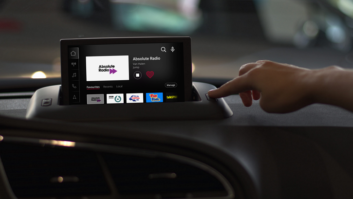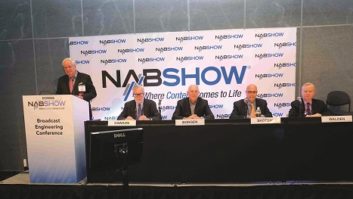
Nick Piggott
LONDON — Hybrid radio is growing in importance across the industry globally. In seamlessly combining the best qualities of broadcast radio and the Internet, we’re developing a powerful and valuable distribution platform that leverages the most out of existing broadcast assets.
Radio is characterized by its scale and diversity of listening. In most countries, around 90 percent of the population uses radio, and taking into consideration traditional radios, connected devices and apps, radio listening is happening across an ever wider range of devices. Radio has to be present on the devices our listeners use and rely less on our listeners using a radio device.
INTEROPERABILITY
Listeners are used to their radios being interoperable; their one radio device can pick up a diversity of radio stations from a range of providers, and probably in various countries. They’re used to stations coming, going and changing. Similarly, as a broadcaster you’re free to buy your transmission equipment from different suppliers, taking into account different considerations, and use different sites to your competitors. It’s because of those common and interoperable broadcast standards that competition and variety exists.
Manufacturers appreciate interoperability, particularly on a global scale. They’re reassured that the failure of one provider doesn’t affect other providers, and that there’s no single point of failure. That’s a growing concern for manufacturers who expect their devices to have a very long working life, such as in the automobile, and who are integrating in proprietary streaming services. What happens if Pandora or Spotify fail in the next three years, and the driver expects it to work for 10 years?
RadioDNS is the international not-for-profit membership organization that promotes hybrid radio based on open and interoperable technical standards. RadioDNS created the original standards for hybrid radio, covering both the fundamentals of how to seamlessly link broadcast and IP, and specific functionality like visuals and metadata that can benefit from that hybrid connectivity. Those standards were published on the RadioDNS website, and available for anyone to download and use.
As a result, a number of broadcasters and device manufacturers in various countries have adopted RadioDNS. Without having to sign contracts or licensing arrangements they can implement hybrid radio, either directly or with the help of a variety of third-party service companies. It’s stimulated the growth of a varied and competitive ecosystem around hybrid radio.
Those standards have proven to be robust and reliable, and to work well alongside both analog and digital radio services. The benefits of using IP tactically alongside broadcast have become tangible, and with it demand for a wider rollout of hybrid radio is growing.
Currently RadioDNS is overseeing a project (Project Logo), in conjunction with various national broadcaster organizations, to dramatically increase the number of stations providing hybrid radio content as a direct result of manufacturer interest, particularly in the automotive sector.
BETTER
Industrial standards are precise, consistent and persistent. European Technical Standards Institute (ETSI) is regarded as one of the preeminent standards bodies globally, and already publishes many of the standards on which digital TV and digital radio are based. RadioDNS, in response to feedback from manufacturers, undertook to migrate the standards for hybrid radio into ETSI.
During 2014, and in conjunction with WorldDMB, RadioDNS embarked on a major editorial process to converge and rewrite various standards to include hybrid radio functionality. As a result, in January 2015, ETSI published three new standards documents:
TS 103 270 — Lookup for Hybrid Radio (replacing RadioDNS)
TS 102 818— Service and Programme Information (replacing RadioEPG)
TS 101 499 — Visual Slideshow (replacing RadioVIS)
These new standards meet the requirements of the most demanding manufacturers, allowing them to implement hybrid radio on a mass scale. In the automotive sector, it puts Hybrid Radio on a similar standing for reliability as digital radio, with the relevant reassurances over durability and reliability.
The onus now is on broadcasters to start using these new standards to provide a differentiated and enhanced experience of radio, both analog and digital. Without a broadcaster commitment to provide the metadata and content in the open standards, manufacturer enthusiasm to implement it in devices is limited. If consumers can’t see the difference between traditional and hybrid radio, then there’s little justification in investing in the engineering effort to support hybrid.
Project Logo is axiomatic to demonstrating to manufacturers that broadcasters support hybrid radio. RadioDNS is working with broadcaster associations worldwide to help individual stations present themselves in the best way possible on hybrid radio devices. In the connected car environment, we want manufacturers to have the confidence to present broadcast radio in an app-like environment, with logo-rich navigation and discovery, drawing people away from streaming services.
RadioDNS will continue to develop hybrid radio during 2015, with projects underway to quality control hybrid radio implementations, add new functionality, and engage with more broadcasters and manufacturers, working collaboratively to make radio better.
Nick Piggott, based in Bristol, is chair of the RadioDNS Project.
Radio World welcomes other points of view. Please send comments to [email protected].












